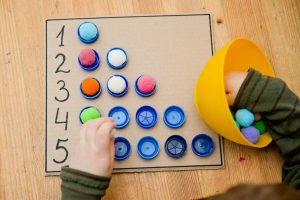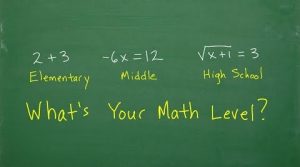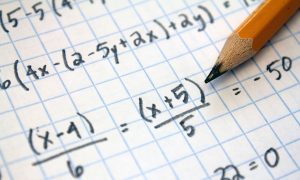Recognizing the Signs of Dyscalculia: What to Look For at Every Age
Spotting the signs of dyscalculia can be tricky,
but understanding them early can make a big difference in helping your child with maths. This simple guide will walk you through the signs of dyscalculia at different ages, from preschool to high school. While all kids struggle with maths at times, kids with dyscalculia face more persistent challenges that need extra support.
Dyscalculia is different from maths anxiety, but it often leads to strong emotions around maths. For example, your child might feel frustrated during activities like board games. By recognizing the signs of dyscalculia early, you can help your child gain confidence and improve their maths skills.
Use this checklist of signs of dyscalculia as you observe your child. It can also guide discussions with your child’s teacher or healthcare provider.
Signs of Dyscalculia in Preschool

- Trouble Learning to Count: Your child may struggle to learn counting, often skipping numbers even after others their age can count in order.
- Difficulty Understanding Counting: Your child might not grasp what counting means. For example, when asked for five blocks, they might hand you a random number instead of counting out five.
- Struggles with Recognizing Patterns: Understanding patterns, such as arranging objects from smallest to largest, can be difficult.
- Difficulty with Number Symbols: Your child might struggle to connect symbols like “7” with the word seven.
- Trouble Connecting Numbers to Objects: Your child might not understand that numbers relate to groups of things, like three cookies or three cars.
Signs of Dyscalculia in Primary School

- Difficulty with Basic maths Facts: Your child may have trouble remembering simple maths facts, such as 2 + 4 = 6.
- Relying on Fingers to Count: Instead of using mental maths, your child might still count on their fingers.
- Struggles with maths Signs: Recognizing and correctly using maths signs like + and ‒ may be a challenge.
- Difficulty Understanding maths Phrases: Concepts like “greater than” and “less than” might be confusing.
- Trouble with Place Value: Your child may often place numbers in the wrong column, leading to errors.
Signs of Dyscalculia in Middle School

- Struggles with maths Concepts: Your child might find it difficult to grasp concepts like commutativity (understanding that 3 + 5 is the same as 5 + 3) and inversion (solving 3 + 26 ‒ 26 without recalculating).
- Difficulty with maths Language: Understanding maths language and planning how to solve problems can be challenging.
- Trouble Keeping Score: Your child may struggle to keep score during sports or gym activities.
- Managing Money: Your child might find it hard to figure out costs or manage money, like keeping track of a lunch account.
- Avoiding maths-Related Activities: Your child may avoid games or situations that require understanding numbers.
Signs of Dyscalculia in High School

- Difficulty Reading Charts and Graphs: Your child might struggle to interpret charts and graphs.
- Trouble with Money maths: Tasks like making exact change or figuring out a tip may be difficult.
- Challenges with Measuring: Measuring ingredients for recipes or liquids in a bottle can be tough.
- Lack of Confidence in Spatial Activities: Activities involving speed, distance, and directions might feel overwhelming, and your child may get lost easily.
- Struggles with Problem-Solving Approaches: Your child may have trouble using different methods to solve maths problems, like finding the perimeter of a rectangle by adding the length and width and then doubling the answer.
What to Do Next
If you notice these signs of dyscalculia in your child, it’s important to take action. Start by talking with your child’s teacher to share your observations and discuss any struggles your child might be facing in class. The teacher can offer valuable insights into your child’s learning patterns and suggest specific interventions that might help.
Collaborate to create a plan that includes adjustments in teaching methods, extra practice time, or the use of visual aids and tools that cater to your child’s unique learning style. Regular communication with the teacher will ensure that the plan is working and can be adjusted as needed to best support your child’s progress.
By recognizing the signs of dyscalculia early, you can help your child overcome challenges and build confidence in their maths abilities. With the right support, every child can succeed in maths in their own way.
Additionally, consider seeking guidance from a specialist, such as an educational psychologist, who can provide a thorough assessment and tailored strategies to support your child’s learning. Early intervention is key, and with a personalized approach, your child can develop the skills they need to navigate maths more effectively. Remember, progress might be gradual, but with patience, encouragement, and the right resources, your child can build a strong foundation in maths and gain the confidence to tackle challenges both in and out of the classroom.